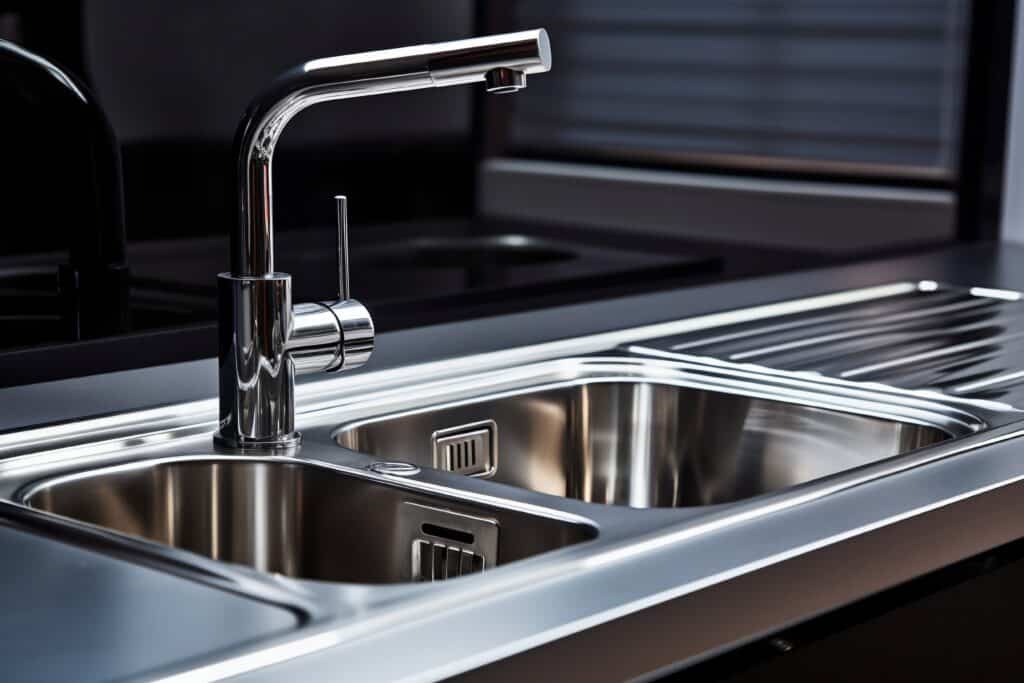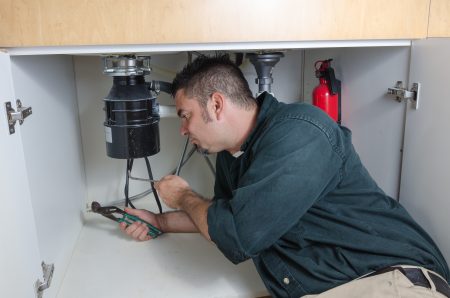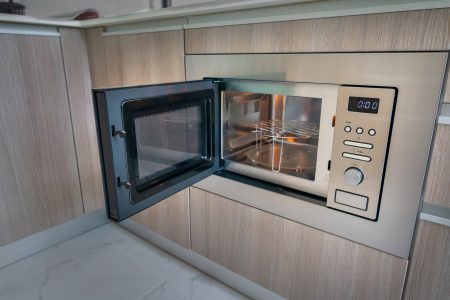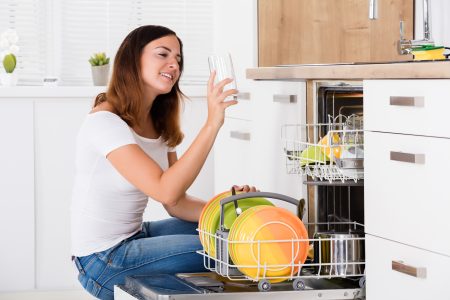Stainless steel utility sink offer numerous advantages for residential and commercial applications. Their primary benefit is durability, as stainless steel resists corrosion, rust, and stains, making it ideal for heavy-duty tasks like washing tools, cleaning gardening equipment, or bathing pets. The material is also easy to clean and maintain, ensuring a hygienic environment.
These sinks boast a sleek, modern appearance that complements various design styles, from industrial to contemporary. This versatility makes them suitable for laundry rooms, garages, workshops, and commercial kitchens. Stainless steel’s timeless aesthetic enhances the visual appeal of any space.
Additionally, stainless steel is a sustainable choice, being fully recyclable and repurposable at the end of its life cycle. This characteristic makes it an environmentally friendly option for those seeking to reduce their carbon footprint. The combination of durability, aesthetics, and sustainability contributes to the popularity of stainless steel utility sink in both residential and commercial settings.
Key Takeaways
Stainless steel utility sinks are durable, long-lasting, and resistant to stains and corrosion, making them a great investment for any space.
When choosing a utility sink, consider the size and style that best fits your needs, whether it’s for a laundry room, garage, or commercial space.
Organize the space around your utility sink with shelves, hooks, and baskets to optimize functionality and keep supplies within reach.
Regular cleaning and maintenance of your stainless steel sink will help prolong its lifespan and keep it looking new.
Enhance the efficiency of your utility sink with accessories like a pull-out faucet, drying rack, and soap dispenser, making tasks easier and more convenient.
Choosing the Right Size and Style for Your Needs
Sizing Up Your Options
The size of the sink will depend on the available space and the tasks you plan to use it for. For instance, if you need a sink for washing large items such as gardening tools or car parts, you may want to opt for a larger, deeper sink with plenty of room to maneuver.
Style Considerations
In terms of style, there are several options to choose from, including freestanding, wall-mounted, and undermount sinks. Freestanding sinks are a popular choice for laundry rooms and workshops, as they can be easily installed anywhere with access to plumbing.
Choosing the Right Fit
Wall-mounted sinks are a great space-saving option, as they can be mounted directly to the wall, leaving the floor space clear for other uses. Undermount sinks are installed beneath the countertop for a seamless look and easy cleaning.
Consider the layout of your space and the specific tasks you’ll be using the sink for when choosing the right size and style for your needs.
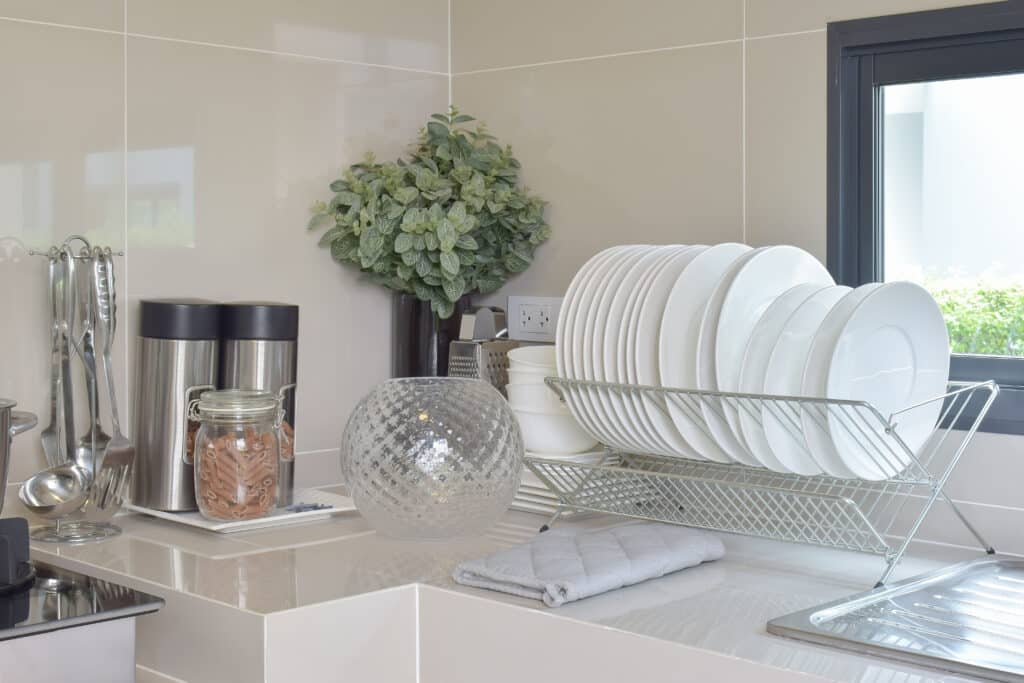
Organizing and Optimizing the Space Around Your Stainless Steel Utility Sink
Once you’ve chosen the right stainless steel utility sink for your space, it’s important to organize and optimize the area around it for maximum efficiency. Consider adding storage solutions such as shelves, cabinets, or drawers to keep cleaning supplies, tools, and other essentials within easy reach. This will help to keep the area around the sink tidy and free from clutter, making it easier to work efficiently.
In addition to storage solutions, consider adding accessories such as a pull-out spray faucet, a soap dispenser, or a drying rack to enhance the functionality of your utility sink.
A pull-out spray faucet can make it easier to rinse off large items or clean hard-to-reach areas, while a soap dispenser can keep hand soap or dish soap easily accessible for quick clean-ups. A drying rack can be useful for air-drying dishes or wet cleaning cloths, helping to keep the area around the sink clean and organised.
Cleaning and Maintenance Tips for Your Stainless Steel Utility Sink
Tips Details
Clean Regularly Use mild soap and water to clean your stainless steel sink regularly to prevent a build-up of grime and stains.
Avoid Harsh Cleaners Avoid using harsh cleaners or abrasive sponges that can scratch the surface of the sink.
Dry Thoroughly After cleaning, make sure to dry the sink thoroughly to prevent water spots and mineral deposits.
Use Stainless Steel Cleaner Occasionally, use a stainless steel cleaner to restore the shine and luster of your sink.
Avoid Leaving Standing Water Avoid leaving standing water or wet sponges in the sink to prevent watermarks and potential rusting.
Stainless steel utility sinks are known for their low maintenance requirements, but there are still some cleaning and maintenance tips to keep in mind to ensure your sink stays in top condition. To clean your stainless steel sink, simply use a mild detergent or dish soap and warm water to wipe down the surface. Avoid using abrasive cleaners or scrubbing pads, as these can scratch the surface of the sink.
To maintain the shine and luster of your stainless steel sink, consider using a stainless steel cleaner or polish on a regular basis. This will help remove any water spots or fingerprints and keep the sink looking new. Additionally, be sure to rinse the sink thoroughly after each use to prevent soap residue or mineral deposits from building up over time.

Utilizing Accessories and Add-ons to Enhance Efficiency
In addition to organizing the space around your utility sink, there are several accessories and add-ons that can enhance the efficiency and functionality of your sink. Consider adding a cutting board that fits over the sink to create extra counter space for food prep or a colander that can be placed inside the sink for easy draining of fruits and vegetables. These accessories can help to maximize the use of your sink and make everyday tasks more convenient.
Another useful add-on for your stainless steel utility sink is a garbage disposal unit. This can help to reduce food waste and make clean-up after meal prep or dishwashing easier. Additionally, consider installing a water filtration system at the sink to provide clean, filtered water for drinking or cooking.
These accessories can help to make your utility sink a more versatile and efficient part of your home or workspace.
Ways to Save Water and Energy with Your Utility Sink
Install a Low-Flow Faucet or Aerator
One simple way to conserve water is by installing a low-flow faucet or aerator on the sink. This can help to reduce water usage without sacrificing water pressure, making it an eco-friendly choice for any space.
Maximize Your Sink’s Potential
Another way to save water with your utility sink is by using it for multiple purposes. For example, you can use the sink for handwashing clothes or soaking items before washing them in the dishwasher, reducing the need for additional water usage.
Make the Most of Cold Water
Additionally, consider using cold water instead of hot water whenever possible to save energy.
Creative Uses for Your Stainless Steel Utility Sink in Various Settings
Stainless steel utility sinks are incredibly versatile and can be used in a variety of settings beyond just laundry rooms or workshops. In a commercial kitchen, a stainless steel utility sink can be used for food prep, dishwashing, or even as a handwashing station for employees. In a garage or workshop, a utility sink can be used for cleaning tools, parts, or even as a makeshift pet grooming station.
In outdoor spaces such as patios or gardens, a stainless steel utility sink can be used for potting plants, cleaning gardening tools, or even as an outdoor bar sink for entertaining. Additionally, in healthcare settings such as hospitals or clinics, stainless steel utility sinks are often used for hand hygiene compliance or medical instrument cleaning. The versatility of stainless steel utility sinks makes them an invaluable addition to any space where cleanliness and efficiency are top priorities.
Stainless steel utility sinks are incredibly versatile and can be used in a variety of settings. In a commercial kitchen, a stainless steel utility sink can be used for food prep, dishwashing, or even as a handwashing station for employees. In a garage or workshop, a utility sink can be used for cleaning tools and parts or even as a makeshift pet grooming station. In outdoor spaces such as patios or gardens, a stainless steel utility sink can be used for potting plants, cleaning gardening tools, or even as an outdoor bar sink for entertaining. Additionally, in healthcare settings such as hospitals or clinics, stainless steel utility sinks are often used for hand hygiene compliance or medical instrument cleaning.
